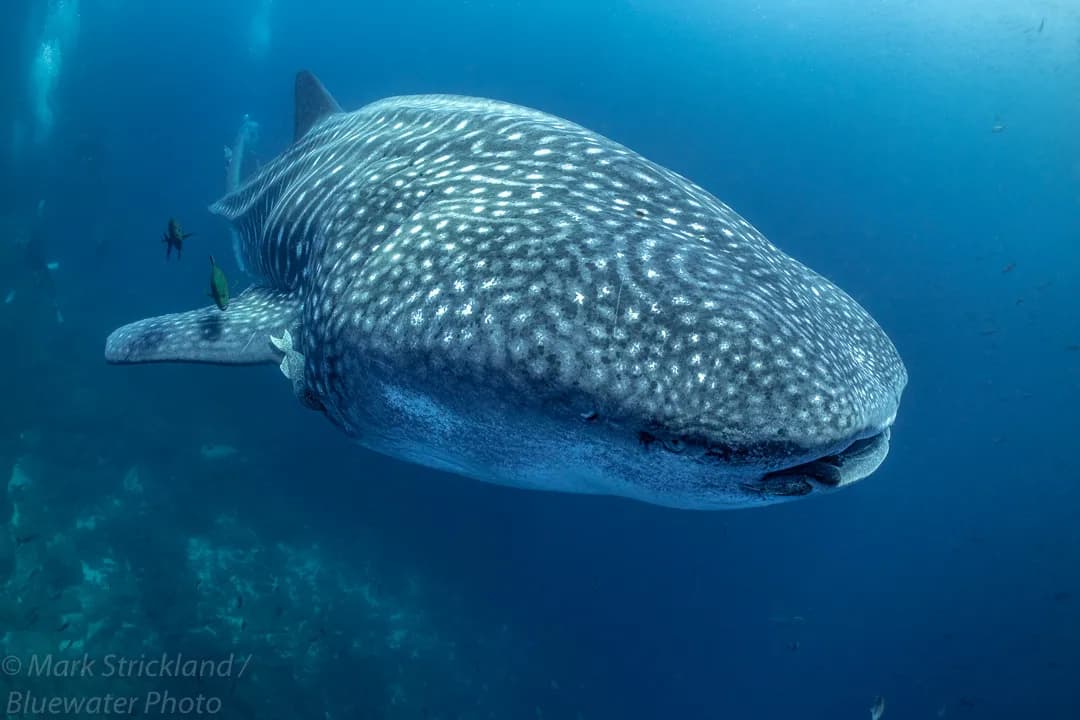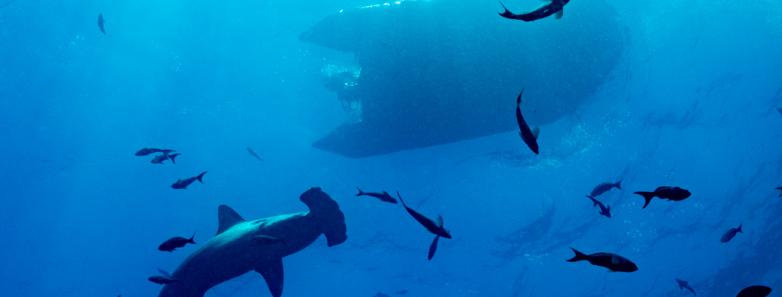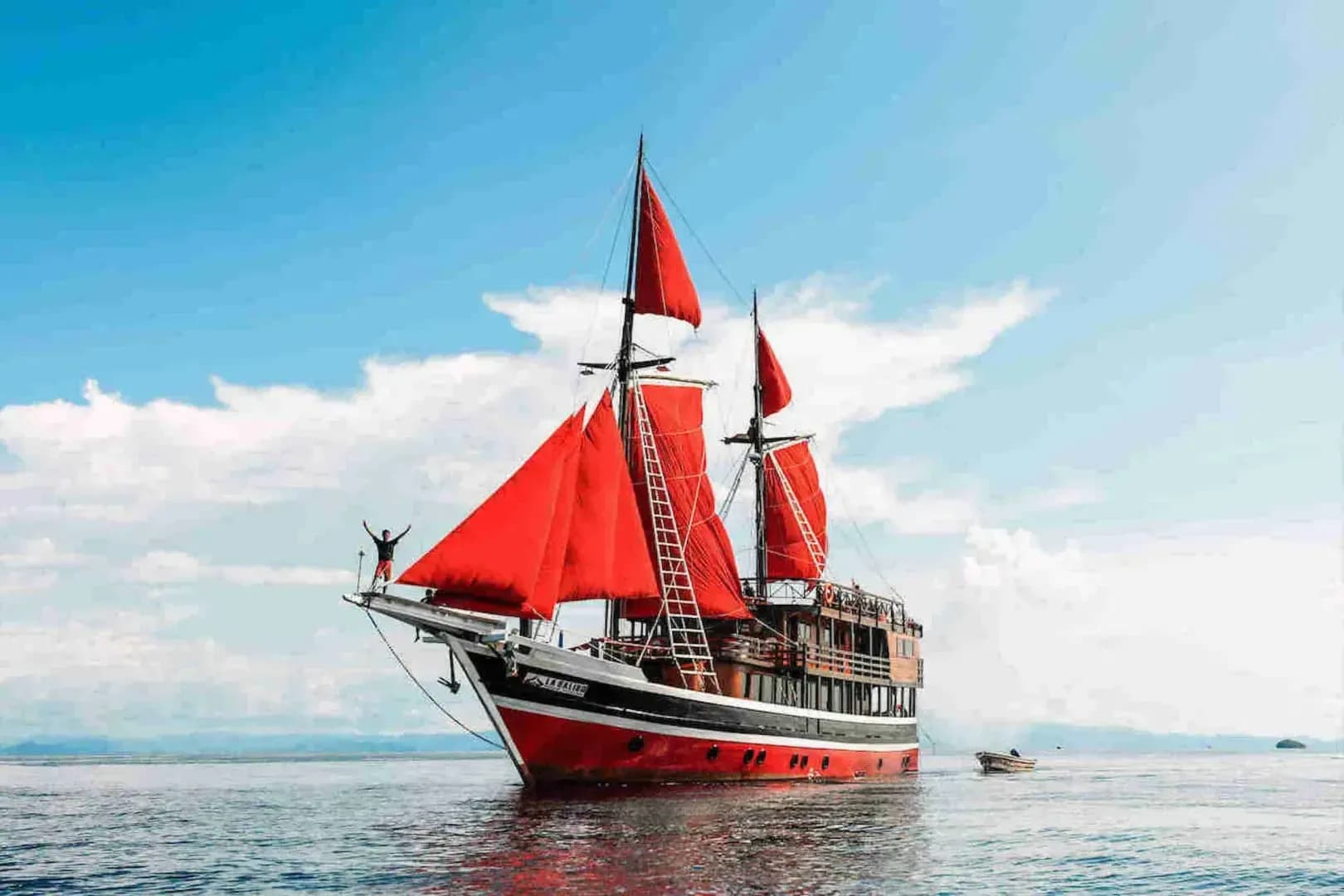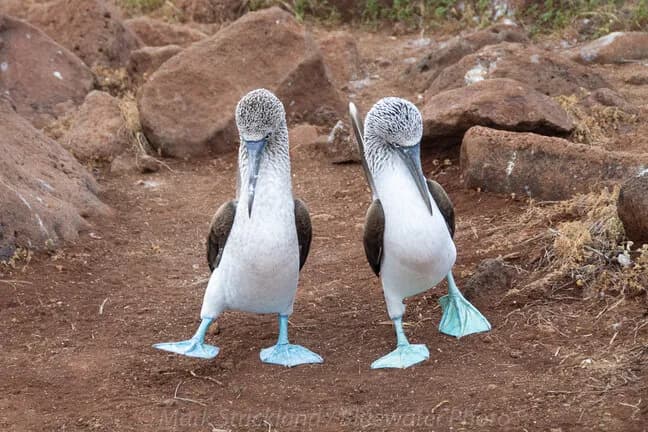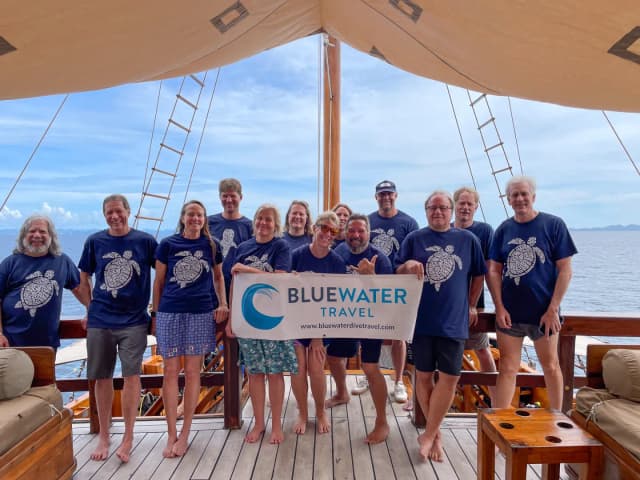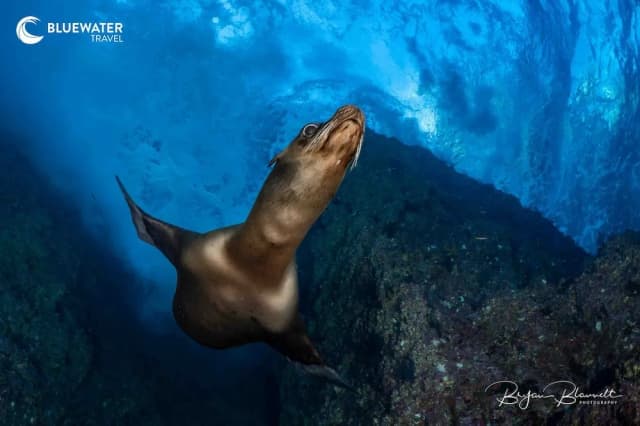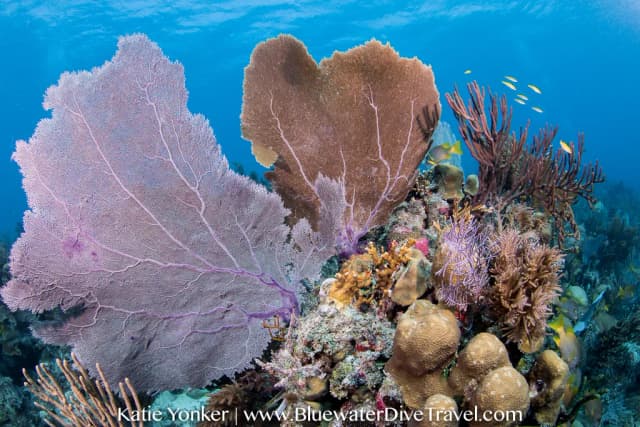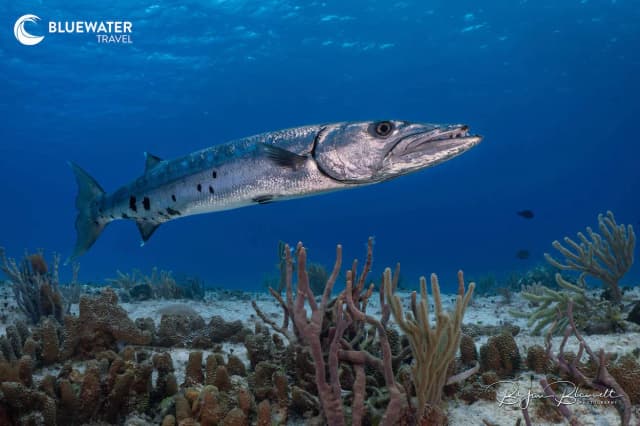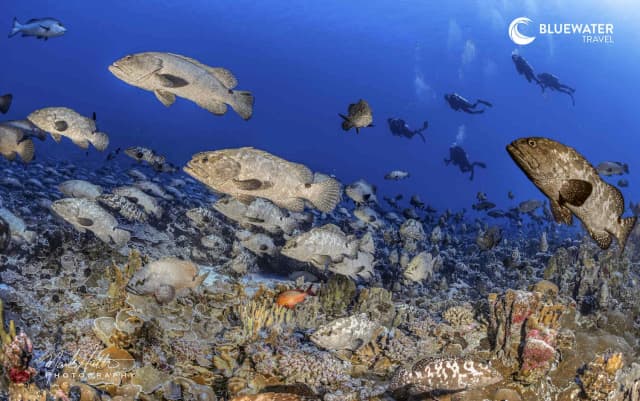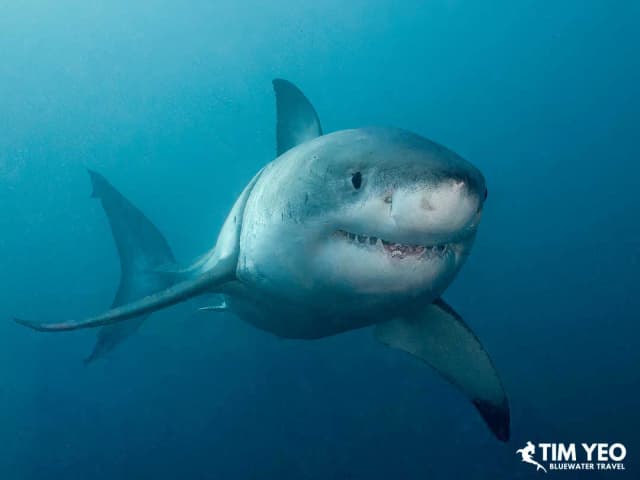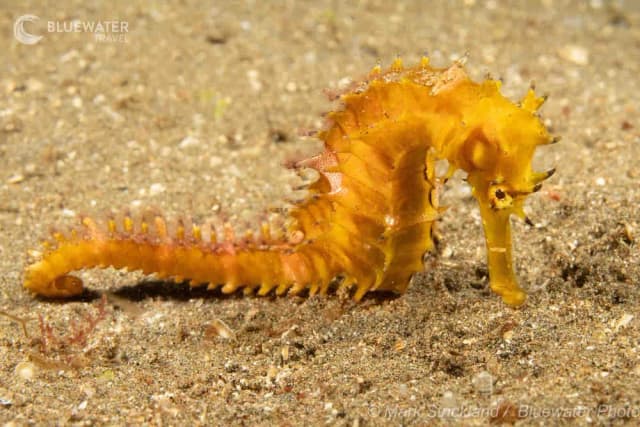Galapagos Trip Report 2022
Bluewater Photo Workshop with Trip Leader Mark Strickland
Cameras Used: Nikon D850 & Nikon D500
Lenses Used:Nikon 18-200mm f/3.5-5.6, Nikon 60mm f/2.8 &Nikon 28-70 mm f/3.5-4.5 (combined withNauticam WACP-1 for wide-angle shots)
Ever since Charles Darwin developed his theory of evolution, the cluster of volcanic islands that comprise the Galapagos has captured the imagination of anyone who is even casually interested in nature. These islands are home to species that are found nowhere else, including the iconic giant tortoises, marine iguanas, flightless cormorants, and many others that make this place a bucket-list destination for divers and terrestrial naturalists alike. One of the factors that account for the high number of unusual and endemic species in Galapagos is geography being so isolated, many species here have evolved separately from their counterparts in other locales. Another factor is the seasonal influence of both warm and cold currents, delivering nutrients and larval marine life from far-flung regions. These currents explain the presence of both temperate and tropical species in the archipelago, ranging from colorful angelfish to penguins. This combination of geographic isolation and widely varied currents creates a unique marine and terrestrial environment that makes this such a special destination. Adding to the appeal, the Galapagos also boasts some of the best big animal diving on the planet, especially for sharks. Needless to say, we were all more than excited to be spending the next 11 days exploring this special place, and could barely wait to get started!
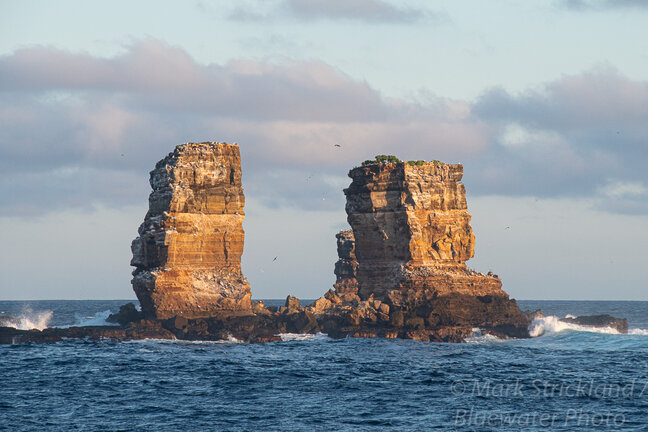
Day 1:
After a lengthy but well-organized process of checking in with authorities upon arrival in San Cristobal, we received a warm welcome from dive leaders Ivan and Daniel of the Galapagos Master, the 120 ft. liveaboard that would be our floating home for the next 11 days. Lunch was served shortly after embarkation, followed by a thorough briefing on boat and diving procedures. It was late afternoon by the time dive and camera gear were assembled, but the chosen site for our checkout dive was less that 5 minutes away by dinghy (panga), so off we went, having split our group of 14 into 2 equal sized teams. Visibility on this dive was unusually poor, but being a shallow site with easy conditions, it suited our purposes well enough, allowing everyone to evaluate their buoyancy and make any needed adjustments. Not a bad start, but fortunately the best was yet to come.


Day 2:
After a tasty breakfast complete with eggs cooked to order, we headed ashore to North Seymour Island for one of two planned shore excursions. As is required for such activities in Galapagos, we were accompanied by a qualified naturalist who escorted us on a short walk amongst the amazingly approachable wildlife. Strolling on a sandy path near waters edge, we observed colorful Sally lightfoot crabs, resting Galapagos sea lions, and a wide variety of seabirds going about their business, none of which showed the least concern about our presence. Looping inland, we were treated with great views of terrestrial iguanas as they lounged in the sun, displaying their signature yellow coloration that results from a diet of yellowish-colored cactus. Nesting frigate birds were everywhere, the males of which inflate their vibrant red throat pouches in a dramatic display intended to attract a mate. Perhaps the highlight, however, were pairs of blue-footed boobies that were also busy romancing, doing their signature two-step dance moves to impress their prospective mates.

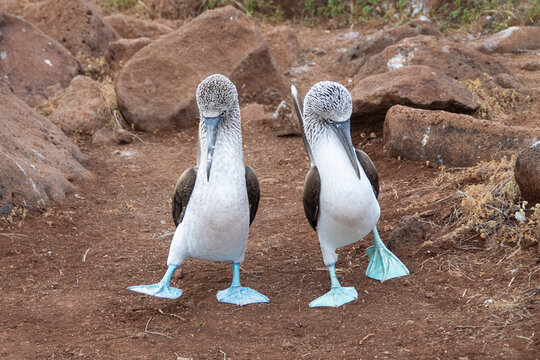
Due to the distance to our next destination, it was suggested that we do only one dive this day, at a fringing reef just off Baltra Island. Underwater terrain consisted of a rocky reef covered with yellow-polyp black corals, sloping steeply to a white sand bottom. Marine life included an abundance of schooling grunts and goatfish, small groupers, garden eels, two stingrays, and several Mexican hogfish. It was an easy, relaxing dive, a good prelude to the more vigorous conditions expected at the northern islands of Darwin and Wolf where we were headed next.

Days 3 and 4:
Darwin Island! While each of the islands offers its own special attractions, Darwin is by far the most celebrated by divers, especially for the incidence of big animal encounters. In fact, combined, Darwin and Wolf are thought to have the highest population of sharks in the world. All of our dives at Darwin were at the same site, at the base of the iconic rock archway that collapsed in 2021, resulting in its new name, Pillars of Darwin. Our first dive started with overcast skies, but there was nothing gloomy about the scene once we submerged. We had barely started our descent when several massive Galapagos sharks appeared, calmly cruising across the reef top, accompanied by schools of Pacific creole wrasse. Due to the famously strong and unpredictable currents, we started each dive with negative entries, heading immediately for the bottom, then found a spot to tuck in out of the worst of the current. A wide variety of reef fish were in attendance, including parrotfish, trumpetfish, leather bass, bigeye, black and bluefin trevallies, king angelfish, rainbow chubs, milkfish and many others. Many crevices were inhabited by fine spotted morays, mouths agape displaying their impressive teeth. On most dives, before even reaching the bottom we were seeing squadrons of scalloped hammerhead sharks in mid-water, weaving among clouds of creolefish, casually making their way against the stiff current. Once everyone got settled among the rocks, the hammerhead sightings increased in frequency, becoming nearly continuous most of the time. Unlike shark sightings at most locales, which are typically just fleeting moments, the hammerheads at Darwin and Wolf seemed to be on a carousel, resulting in a nearly constant stream of them passing before our eyes and lenses. Not everyone saw them in large numbers, but several of our group were treated with the awesome sight of dozens at a time! Even without the sharks, the diving at Darwin would be superb, but watching these impressive predators in such numbers was a rare privilege.
While many trips include only a single day at Darwin, our trip was designed to maximize time there, with 4 dives on each of two days at this fabulous site. As our time there flew past, each dive seemed to top the previous one, many times including appearances by gamefish like hefty almaco jacks and yellowfin tuna, and during blue water safety stops, wahoo - up to eight at a time! On nearly every dive, we were greeted by several large Galapagos sharks as soon as we began our descent, which were soon followed by hammerheads. Nearly as numerous as the hammerheads were green turtles; at nearly any moment there was at least one cruising past, often three or four. And, unlike the sharks, they seemed totally unconcerned about us divers, frequently swimming right up to investigate us. As if all this werent enough, each of our days at Darwin and Wolf included at least brief appearances by the largest of all fish, often the size of a school bus a whale shark! Most of the time these massive animals cruised past just on the limit of visibility, and while seeming to swim in slow motion, quickly outdistanced our vigorous swimming efforts. As is typical in this region, all were adult females, easily measuring 40 feet in length, and judging by their swollen bellies, were likely pregnant. We also observed a fascinating interaction between species that most of us had never heard of before almost every whale shark was accompanied not only by the usual remoras, jacks and other hangers-on, but also one or more large Galalpagos sharks! According to Ivan, these opportunistic predators follow the whale sharks closely, looking for opportunities to prey on the remoras that are typically found clinging to the spotted giants. This amazing action continued right up to the last dive at The Pillars - as we moved into the blue for a last look before ascending, another whale shark, this time a bit smaller (only 30 feet or so) made several appearances before fading into the distance. What a great finale to our time at Darwin!


Days 5 and 6:
Wolf Island As with Darwin, our itinerary also included two full days and 8 dives at Wolf, which compares very well with Darwin in terms of shark population and overall volume and variety of marine life. While there are a handful of potential dive sites at Wolf, we concentrated our efforts on two in particular, Landslide and Turtle Bay. Both locations consist of rocky reefs that tumble steeply away from the shore. Like the terrain above water, the substrate is composed of a jumble of volcanic rocks both large and small, but due to somewhat warmer water temperatures relative to the equatorial islands, there is also a fair amount of hard coral, including colorful clusters of orange tubastraea. Our attention, however, was focused outwards in the water column, where we once again enjoyed a near-constant parade of schooling creolefish, punctuated regularly by passing hammerheads. Just beyond the hammerheads was a huge school of bigeye trevallies, also holding their position in the current with little visible effort. Galapagos sharks were also abundant, including some that easily measured 10 feet or more. On several dives, we watched small groups of spotted eagle rays circling over shallow sandy patches or winging along in the current. Golden cownose rays were also seen on several occasions, as well as hefty dog snappers and barred pargos. Bacalao groupers were quite numerous as well, typically displaying a dull grayish coloration, along with occasional appearances of the spectacular golden phase, which really stood out against the surroundings. Other highlights included guineafowl puffers, which also occur in a golden phase as well as black with white speckles, rainbow chubs and rainbow runners. And, as its name implies, Turtle Bay certainly lived up to its reputation, as there was rarely a moment when there werent several green turtles in sight.
Over the course of our two days at Wolf, we alternated between the rocky slopes at Landslide and Turtle Bay. Both sites offered consistent sightings of all the signature creatures, but as the strength of the current picked up, so did the volume of marine life. As we tucked in amongst the rocks to watch the show, a nearly continuous stream of creolefish streamed by, accompanied by black durgon triggerfish, yellowtail surgeonfish and bluefin trevallies. There were times when only a few hammerheads were in sight, but most of the time we could see six or more at a time, effortlessly advancing against the stiff current. On the second morning at Wolf, it was all we could do to cling onto rocks and keep from being swept away in what had become a 2 knot current, but the hammerheads made it look effortless, casually holding their place in the flow, occasionally zooming ahead before veering off into deeper water. For a glorious fifteen minutes, we had the pleasure of hunkering down and watching the show as these magnificent creatures paraded past, for once with good sunshine, no thermocline and relatively good visibility. We all agreed what an awesome dive! Subsequent dives at Wolf included several active cleaning stations with a dozen or so barberfish and king angelfish servicing a steady clientele of reef fish, as well as hammerheads that peeled off from the school for a few brief moments. As with Darwin, every one of our dives at Wolf also included at least brief appearances by whale sharks, including several close passes by these massive animals. All too soon our time at Wolf had come to a close; it was time to get underway to Fernandina Island in order to get the timing right to watch the marine iguanas feeding the following day.
Day 7:
Fernandina Island, Cabo Douglas Compared to the relatively warm, clear waters of Darwin and Wolf, the surface water at Cabo Douglas was less than inviting, looking very much like pea soup. Our first dive was relatively deep, with the objective of finding one of the regions most distinctive characters, the red-lipped batfish. With a face reminiscent of a grumpy old man with a mini-unicorn horn, ruby red lips, and a frog-like body, they are uniquely photogenic; for many, theyre among the real highlights of diving the Galapagos. But getting a good photo did not come easy despite being slow swimmers, these bottom-dwellers are surprisingly skittish, with a tendency to turn away from the camera. And, being among the western-most equatorial islands and subject to the frigid Cromwell equatorial current, even our thick wetsuits were less than adequate. It didnt get any warmer at depth, but fortunately the visibility did open up somewhat, and after a few minutes of searching, everyone got to spend most with the dive with a red-lipped batfish, allowing for plenty of photo ops. After mugs of hot chocolate and soaking up some rays on the sun deck, it was time to gear up for our second dive, which was timed to match the predicted feeding period of another unique Galapagos creature, the marine iguana. Just like us, these prehistoric looking reptiles enjoy a daily bake in the sun to raise their body temperature, then enter the ocean for a brief period to feed on algae in very shallow waters. Using their claws to cling onto the rocky substrate in the heavy surge, the iguanas made it look easy. For us humans, however, not so much - between our thick wetsuits, limited visibility and powerful surge, conditions were rather challenging, but the shallow depths allowed for generous dive times, and eventually everyone managed to locate one or more iguanas as they noshed on algae among the rocks. For those who wanted another crack at the batfish, a third dive was offered after lunch, providing additional photo ops of these iconic creatures. Two different uniquely photogenic, iconic species at the same site on the same day thats pretty hard to beat!
The cold water, vigorous currents and challenging diving required a plenty of energy to keep us going, but our chef and steward never missed a beat, keeping us well-fed with deliciously prepared and varied meals, which were served in the salon on the main deck. Freshly-prepared snacks and hot beverages also awaited us on the lounge deck as we returned from nearly every dive that wasnt followed by a main meal I doubt that any of us lost any weight on this trip!


Day 8:
Isabela Island - At Isabella, all three dives were at Cabo Vicente Roca, where a steep, rocky slope turns into a vertical wall at a rocky point, dropping well beyond recreational diving depth. The main attraction here is possible encounters with the largest of all bony fish, the ocean sunfish (Mola mola), which are attracted to cleaning stations staffed by barberfish and Mexican hogfish. Also possible are sightings of penguins, Galapagos and bullhead sharks, and a wide assortment of reef fish including the garishly colored harlequin wrasse. Once again, conditions didnt look inviting from the surface, as the water color resembled coffee, with visibility less than 10 feet. Fortunately it opened up considerably at depth, at times over 50 feet, yet was still very dark due to the layer of murky surface water. Marine life on the slope was the most colorful yet on the trip, with thriving orange and purple gorgonians covering most of the rocks. Schooling fish were not as abundant as wed hoped, but a steady stream of reef fish made appearances, including longnose hawkfish, a Galapagos bullhead shark and harlequin wrasse in several different color schemes. Our main objective was finding the Mola molas that frequent cleaning stations at roughly 100 feet, and we did catch brief glimpses of several in the murky distance, but none of our three dives resulted in any close encounters. Nor did we see any penguins. Still, everyone agreed that it was excellent diving. And, as the panga motored back to Galapagos Master after our third dive, a manta made a brief appearance at the surface. All in all another great day!
Day 9:
Our last full day of diving was at Isabela Island, where we did all three dives at a rocky point called Cabo Marshall. A relatively shallow, sloping rocky reef, this site features highly varied topography, with many peaks, valleys and ledges to be explored. While a brisk breeze created whitecaps at the surface, a steady underwater current prompted the abundant orange cup corals to remain open, adding a nice touch of color to the reefscape. Looking closer, we saw that many of these corals were being fed upon by golden wentletrap snails, whose eggs have evolved to closely resemble the stinging polyps of their prey. A variety of reef fish went about their business, including various wrasses, trumpetfish and snappers, while schools of small barracudas hovered in mid-water. Garden eels poked their heads from the sand bottom, as did several small stingrays. Most of us were concentrating on fish and bigger animals, but at least one diver saw a slipper lobster tucked under an overhang. The current picked up on dive two, resulting in much more fish activity, including schools of yellowtail surgeons feeding among the rocks, accompanied by several leatherbass. A couple of white-tip reef sharks alternated between resting on the sand bottom and meandering amongst the coral-encrusted rocks. The main attraction here was the possibility of mantas, and one did make a brief appearance, along with several green turtles. But mostly it was just nice, multi-level diving with an excellent variety of marine life.


Day 10, final dive of the trip:
Cousins Rock: We awoke near this rocky islet to the welcome sight of blue water after several days of soupy conditions, we were ready for some good visibility! As we back-rolled off the panga one last time, we were pleasantly surprised not only by the water clarity, but also relatively warm temperature. And unlike most dives on this trip, we had not been given a time limit, so the pace of the dive was very relaxed. Fortunately, there was also plenty to see as we followed the islets perimeter, exploring the moderate slope. The water column was filled with schooling damsels and creolefish, as several king angelfish and Mexican hogfish made their way along the ledge lines. Overhead, an Eagle ray and several turtles soared past, while a pair of Galapagos sharks patrolled in the distance. The real highlights of the dive were not revealed until the end, however, when Ivan and Daniel pointed out a cute juvenile frogfish and several photogenic Pacific Seahorses among the branches of black coral. Like any great experience, we hated to see it end, but what a perfect note to finish on not only had we had close encounters with all of the big animals that Galapagos is so famous for, but nearly all of the special critters and endemic species as well. As Galapagos diving goes, it would be hard to imagine it getting much better!


Later in the day, we all went ashore at Santa Cruz Island, traveling by bus to the Charles Darwin Research Center in the town of Puerto Ayora. The same naturalist who showed us around North Seymour Island met us there and narrated as we visited each of the centers excellent exhibits. This includied a chance to observe the endemic and critically endangered Galapagos tortoises, which despite years of protection, are still struggling to maintain a viable population here. All things considered, though, the Ecuadorian government seems to recognize the special place that these islands and their unique wildlife hold in the natural world, and are serious about protecting it. Of course there have been many challenges over the years, but it was great to see this example of ecotourism functioning well despite the nearly total absence of visitors for much of the recent Covid pandemic. Reflecting on both the underwater and terrestrial wonders that wed just experienced in Galapagos, I think we all felt privileged to have spent time in this special place, and will savor the memories and images for years to come.
